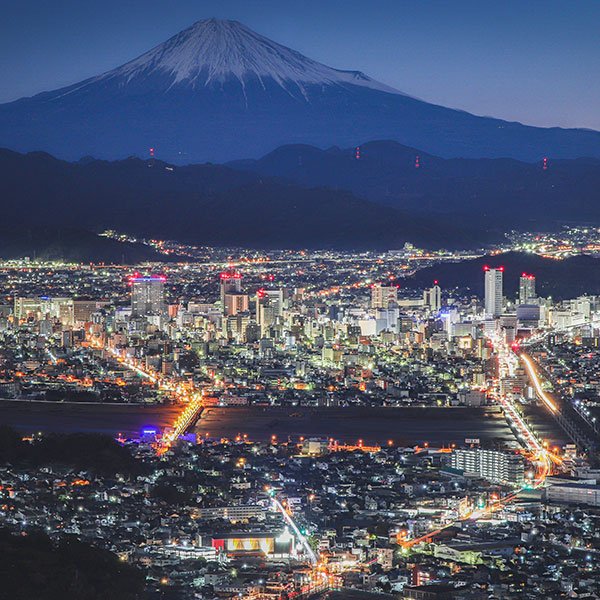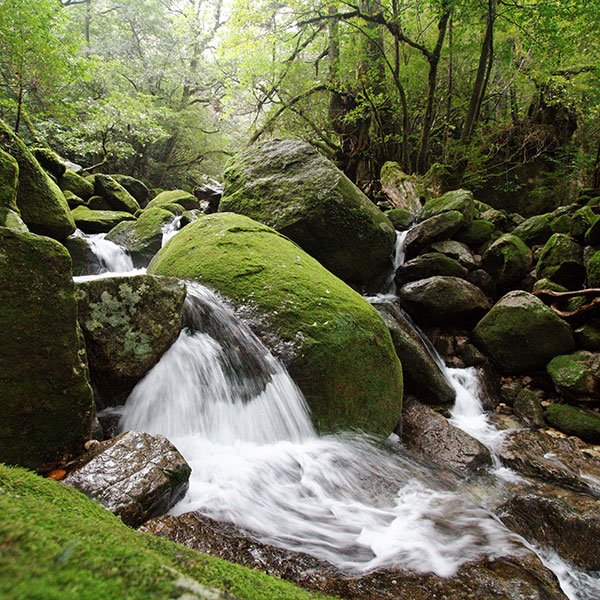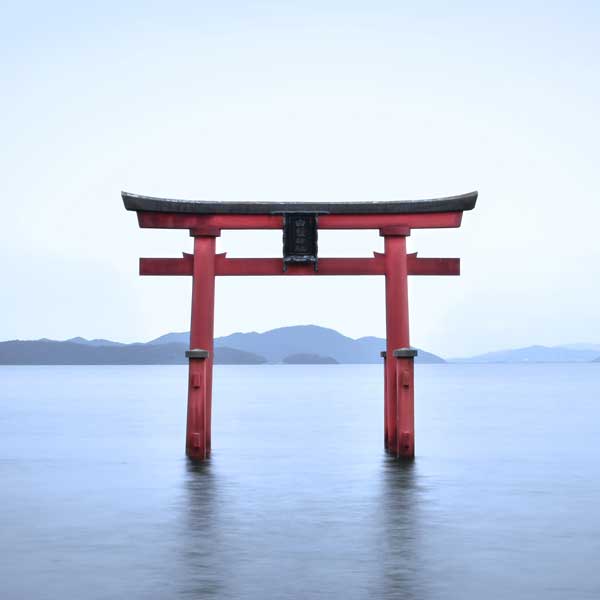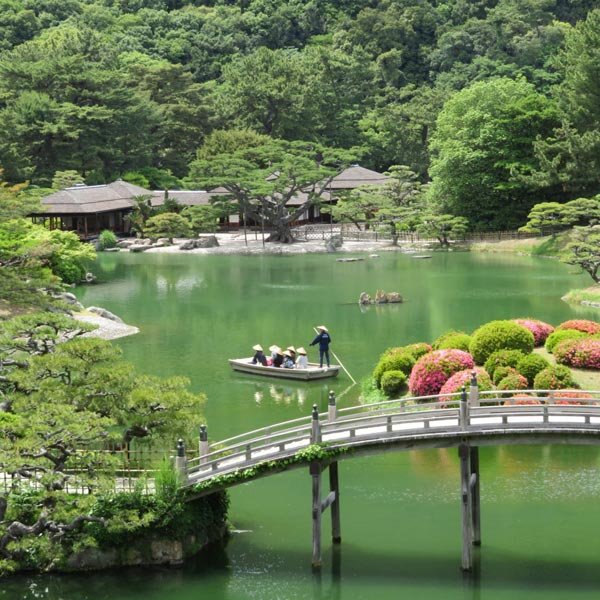22 Best Japanese Ceramic Towns You Should Visit
by David McElhinney & Lucy Dayman | TRAVEL
© Tjabeljan / Creative Commons, Okawachiyama, Imari
Japanese ceramics are beloved by connoisseurs as some of the finest in the world. There is an almost endless variety of forms and styles, which can be confusing until you realize that each evolved individually in different parts of Japan.
If you want to understand the craft of pottery in Japan, or to see some of the most unique examples, there’s no substitute to visiting one of the many ceramic towns, which are spread out across the archipelago. We have put together a list of 22 of the best Japanese ceramic towns where you can see historic craft in action, buy some one-of-a-kind ceramic art, and even roll up your sleeves and give it a go yourself. So read on for some unmissable suggestions!
In fact ceramic art is so widespread in Japan that you won’t be able to visit them all even with this guide! For a comprehensive view of Japanese ceramic styles, check out The A-Z of Japanese Pottery!
1. Tokoname
Plum Kyusu Teapot by Shoryu, available at Japan Objects Store
Tokoname in Aichi (see map) is best known for its deep red color and unique designs. This form of Japanese pottery goes back beyond the 12th century, and the town is one of the Six Ancient Kilns of Japan alongside Bizen, Tamba, Echizen, Seto, and Shigaraki. Most of the clay used in this method is sourced from the Chita peninsula, where Tokoname is located. The clay here is rich in iron, producing the iconic deep earthy red color. To explore the form in more depth, simply put aside a little time to explore the city's two pottery paths which weave through the town.
Interested in buying an authentic kyusu teapot yourself? At Japan Objects Store, we work with some of the finest artisans and kilns from Tokoname to bring you handcrafted teapot sets and matcha bowls that you will treasure for years to come!
2. Kyoto
Rakuware Match Bowl Set, available at Japan Objects Store
As the unofficial cultural capital of Japan, you'd expect Kyoto to have some connection with the art of ceramics. Kyo-yaki is the term given to pottery crafted in Kyoto, sometimes also known as Kiyomizu-yaki when produced in the Higashiyama area around the famous Kiyomizu Temple. Unlike other regions, which often boast a style unique to their region, the beauty of kyo-yaki is its hybrid quality. Beginning in the Azuchi–Momoyama period, craftspeople from around Japan would bring their unique styles to the city – which was the capital at the time – and the city's craftspeople created sophisticated designs with diverse techniques to create the kyo-yaki we know today.
Kyoto is home to many ceramic artists and pottery studios, and there are many chances to explore pottery shops and galleries, as well as visiting pottery workshops to watch these artworks being produced.
If you can’t make it to Kyoto yourself you can check out our selection of Kyoto ceramics at Japan Objects Store.
3. Inbe
Bizen-ware Sake Set, available at Japan Objects Store
In the art-loving pocket of Okayama Prefecture is where you’ll find Inbe (see map), a small village that spawned a very unique type of pottery simply known as Bizen-ware or Bizen-yaki. Named after the province in which it was created, this much sought-after ceramic style is typically made from a either a really rough earthy, iron rich clay, or a combination of different clays with different densities creating a much more textual product.
Bizen-ware on a Wheel
Bizen-yaki is said to have a history that dates back over 1,000 years, which is pretty incredible; however what’s more interesting about this unique type of ceramic is its claimed supernatural powers. Locals have believed for centuries that food eaten off Bizen plates and sake sipped out of Bizen cups tastes better, also flowers held in Bizen vases are said to last longer. A scientist tested the claims and it turns out that Bizen pottery actually cut out 90% of far-infrared rays, keeping natural materials fresh, meaning the claims could actually be true.
If you make it to Okayama prefecture, be sure to stop by Bizen to learn more about this fascinating form of pottery. You can visit the Bizen-yaki Museum or try to make your own Bizen-style pottery, by signing up for a class at the local pottery school.
To find out more about this unique style, check out What is Bizen Ware? 7 Things to Know About Wabi-Sabi Pottery!
4. Tamba Sasayama
© Freer Gallery of Art, Smithsonian, Tamba Ware Storage Jar, Muromachi Period, Circa 1400-1450
Tamba Sasayama, one of the Six Ancient Kilns of Japan, is a small town in Hyogo Prefecture (see map) with an 800-year history in the pottery trade. Sprinkled among the fields and rice paddies of the region, you’ll find ceramics studios and noborigama, or “climbing kilns”. The local pottery, known as Tamba-yaki, is utilitarian and simplistic in design, meaning it has become commonplace in households throughout Japan. Tamba pottery is typically used for drinking vessels and basic ornamentation, and occasionally for utensils used in tea ceremonies.
Located about an hour north of Kobe, the Tamba region is easy to access from major cities in central western Japan. There are plenty of galleries and workshops worth your patronage here, including the Museum of Ceramic Art and the Tachikui Sue no Sato Craft Park. You should also visit the longest kiln in the area, the 47-meter Saiko no Noborigama, built in 1895 and fired annually during the Haru Monogatari festival in spring.
5. Echizen
Resting within the palm of a mountain range in Fukui Prefecture (see map), Echizen is a region with a rich craft heritage that spans everything from ceramics to blade smithing to washi paper crafting. Pottery has flourished in Echizen since the Heian period, thanks to abundant iron-rich clay deposits that result in dark reddish-brown ceramics. Echizen pottery is deemed well-suited to crafting tea ceremony paraphernalia, but as Edo-period potters in the region showed a staunch aversion to adapting their tradition to fit this growing demand, the pottery was largely used for storage vessels instead.
Head to Echizen Pottery Village, established in 1970, to learn more about this storied brand of ceramics. Here you’ll find the Fukui Prefectural Pottery Museum, the Sculpture Park and Ceramics Art Center, and the Echizen Pottery School.
6. Mashiko
In Tochigi Prefecture, just two and a half hours north of Tokyo by train (see map), is where you’ll find Mashiko, arguably one of the nation’s most famous pottery hubs. Although the creative achievements of the area go way beyond pottery and include painting and other traditional crafts, ceramics is the main drawcard.
Known as Mashiko-ware or Mashiko-yaki (yaki means fired), the appeal of the area’s pottery lies in its authentic, rustic feel; thick in structure and simple in design, this local pottery looks and feels like it’s been made to stand the test of time. There have been pieces of pottery found in the area dating all the way back to the Jomon Period (14,000-600 BCE), but you can trace the modern history of Mashiko pottery to the mid-1800s when it was said that a man by the name of Keizaburo Otsuka noticed the quality of the healthy red clay here and set up a local kiln.
© Seto Hiroshi, Orange Green and Gold Vase, Mashiko Museum of Ceramic Art
The demand from nearby Tokyo for the everyday-use ceramics boomed in the early 1900s, and by 1924 Shoji Hamada, a famous potter, set up a workshop to meet demand. Today you can learn all about the history of the city’s relationship with pottery by visiting the Shoji Hamada Memorial Mashiko Sankokan Museum, the Mashiko Museum of Ceramic Art as well as coming face to face with the contemporary ceramic scene at the Mashiko Pottery Cooperative Selling Center.
If you don’t get a chance to make it out of Tokyo, don't worry, there are plenty of places in the city to explore Japanese ceramics. Check out the 5 Best Places to Buy Ceramics in Tokyo.
7. Arita and Imari
© Japan Objects, Touzan Shrine, Arita
Probably the one town most synonymous with world-class Japanese ceramics, Arita sits in western Saga Prefecture (see map) and is generally known as the hub of where porcelain was first produced in Japan over 400 years ago. The local pottery style is known as Arita-ware, Imari-ware or Imari-yaki. Its relationship with pottery began when kaolin, a clay mineral that’s an essential component of making porcelain, was found buried in the local mountainside.
As craftsmen from Korea were brought to the area to share their knowledge of ceramics the local pottery economy boomed, and it’s why you’ll see that many of the pieces from this area feature Chinese- and Korean-influenced design aesthetics. Because this local type of porcelain was far more durable than the more crumbly pottery of the area, it became an incredibly valuable source of income and identity for the area of Arita.
© Arita Porcelain Lab, Gallery Plate
One well-known kiln that has been in operation for over 200 years is the Arita Porcelain Lab. You can find out more about this forward-thinking company in our interview at The Future of Japanese Pottery: Arita Porcelain Lab.
© Japan Objects, Touzan Shrine, Arita Okawachiyama, Imari
Today it’s impossible to visit the town without stumbling upon monuments dedicated to the craft; in the village of Okawachiyama (see map), even the town map is made from porcelain. If you’re planning on visiting to learn more about the craft, be sure to visit this village, located just outside of the central Imari area: it’s a small semi-isolated village dedicated to the craft. You will find an incredible concentration of ceramic kilns with beautiful handmade pieces at all price levels. Other highlights include Tozan Shrine in Arita, famous for its porcelain torii gate, the Arita Ceramic Museum, the Kyushu Ceramic Museum, and the nearby center of Imari where you’ll find the porcelain Koimari Clock.
8. Shigaraki
© Brooklyn Museum, Shigaraki Ware Chawan (Tea Bowl) by Tsujimura Shiro (born 1947) 1999
Located in the tranquil Shiga Prefecture, the Shigaraki area (see map) is famous for its rustic bronze and earthy-toned ceramics. The clay used in this area when baked in the kiln turns a warm, reddish color with flashes of green. The town is also home to one of the Six Ancient Kilns in Japan, making it one of the oldest pottery towns in the country. Around the medieval period, the area's makers were producing jars and mortars and firing them in anagama kilns. It's from this era that the ceramics we know today as Shigarakiware got their style. Today the area still produces ceramics like flower vases and tableware, but some of the more unique creations are garden furniture and decorative ornaments like the iconic tanuki (raccoon dogs) you can often see outside local restaurants and businesses.
9. Kagoshima
© Los Angeles County Museum of Art, Satsuma Ware Tea Storage Jar, Edo Period, Circa 1800-1850
Originally from Satsuma Province, in modern day southern Kyushu, Satsuma-yaki has been crafted since approximately the year 1600. And much like pottery elsewhere in Kyushu, it was developed by Korean potters shipped to Japan and granted samurai status in the late 1500s. The two primary styles of Satsuma earthenware – known locally as shiro-mon (“white items”) and kuro-mon (“black items”) – were once stratified by class, with the elite preferring the former, but are now chosen based on preference.
In Kagoshima, a vibrant city in southern Kyushu (see map), you’ll find myriad examples of this earthenware in the Kagoshima City Museum of Art. Original pottery kilns that produced this form are located throughout the prefecture; in Kagoshima City, as well the Ibusuki, Kajiki, Kirishima and Miyama areas.
10. Kanazawa
© JNTO, Kutaniware
Quickly becoming one of the more popular places to visit for a little traditional culture and spectacular city views, Kanazawa, in Ishikawa Prefecture (see map), also boasts a fascinating ceramic history. If there were one product that you could best associate with the city's ceramic history, it would have to be the delicately decorated Kutani porcelain. This form of porcelain was crafted in the Kutani Village from the 17th century and continued on for several decades. Kanazawa is known unofficially as a gold-loving city, and Kutani porcelain is an embodiment of that, characterized by thickly applied red, yellow, green, purple, and dark blue paint and adorned with a gold finish.
11. Tobe
© Baizan Kiln, Blue and White Tobe-yaki Dish
Heading on over to the island of Shikoku, you’ll find a far more delicate style of pottery known as Tobe-ware or Tobe-yaki. Not far from the larger city of Ehime (see map), Tobe pottery came into existence after the locals realised that the neighbouring mountainside was a very fertile ground for producing some excellent pottery-style clay. With a history that goes back almost 250 years, it’s a little more low-key in terms of reputation and reach than some of its other ceramic contemporaries, but still a very fascinating version of the craft.
Tobe-yaki’s most distinctive element is its decoration. Typically painted with indigo, and occasionally red and green paints, some describe the style as more ‘feminine’ than other rustic versions of everyday Japanese pottery. You’ll typically find Tobe pottery in the form of bowls for sanuki udon noodles, and as decorative vases. To show off their ceramic talents, the town hosts a Tobe-Yaki Ware Festival twice a year, in the spring and fall. During these events around 60 stall holders set up shop in the heart of Tobe showcasing the best of their work.
12. Amakasu
© Kumamoto Guide, Amakusa Ware Porcelain Cups
Amakusa-ware, baked in the Amakusa archipelago of Kumamoto Prefecture (see map), is crafted from high-quality pottery stone and has an angelic aesthetic quality that has won it many adoring fans over the last few centuries. During the Edo period, when Amakusa was under control of the Shogunate, the local economy was founded upon the ceramics and porcelain trade. 11 pottery kilns remain active in the region, as do scores of craftspeople implementing techniques that have been passed down for generations. Such endurance ensured Amakusa-ware was designated a national traditional craft in 2003.
Among the 120 islands, large and small, that make up Amakusa, you’ll find porcelain aplenty. At the Amakusa Cultural Exchange Hall – built in 1935 and embodying the strong influences of Christianity and Western design in the area – you can learn about East-West cultural fusion while getting your hands dirty throwing pottery. Amakusa also holds a bi-annual pottery festival, appearing each spring and fall.
13. Hasami
Hasami Ware Bowl
Amid the terraced hills of Hasami, a small town in Nagasaki Prefecture (see map), you’ll find milky white porcelain, overlayed with indigo and blue gosu enamel, called Hasami-yaki. Its origin story is a familiar one in Kyushu’s pottery scene; beginning in 1598, when Omura Yoshiaki, the then-lord of Omura domain, brought back potters from Korea. During the latter part of the Edo period, Hasami was Japan's largest porcelain producing area, so it’s little surprise pottery is still so integral to the town’s sense of identity.
Visitors to the region should note that there’s a dense concentration of pottery studios in nearby Nakaoyama Pottery Village, while the Hasami Cermaics Hall offers pottery-wheel workshops to tourists and has a fine collection of locally made porcelain.
14. Naruto
© Unlock Japan, Otani Ware
Naruto, a city in Tokushima Prefecture (see map), is perhaps better known for its namesake whirlpools found just off the coastline or as the starting point of the famous Henro Pilgrimage. However, it’s also home to one of the most popular styles of pottery on the island of Shikoku – Otani-ware, or Otani-yaki, a rustic and durable form used for drinking and storage vessels. There are a handful of local kilns and studios where you can experience potters throwing Otani-ware, including the Onishi, Mori and Yano studios, and the Yoshimi, Motoyama and Umesato Kilns.
15. Kasama
The Cooperative of Kasamayaki, Tea Set by Akira Otsu
The conventional wisdom in Kasama, Ibaraki Prefecture (see map), is that it has the oldest pottery tradition in the Kanto region (which covers most of central eastern Japan). While this is inevitably hard to prove, the region certainly has a venerable history of ceramics production, with over 200 active kilns. Kasama-ware is also celebrated for its diversity; some potters stick to age old methods to produce silky smooth ceramic utensils, while others are iterating upon dyed-in-the-wool techniques to produce distinctly artistic works, some of which are exported globally.
Notable points of interest for visitors to the region include the Ibaraki Ceramic Art Museum in Kasama Art Forest Park, and nearby pottery education center Kasama Craft Hills, which has several hands-on experiences.
16. Kaga
© Kaburaki, Kutaniyaki
The Kaga region of Ishikawa (see map) is known for its sea-to-mountain scenery, winter snow crabs, hot spring resorts, traditional architecture, and as the home of Kutani-yaki, an aforementioned form of porcelain found along the Sea of Japan coast.
Kaga Kutani-yaki is vibrant and rich in detail, with geometric patterns and color palettes that betray it’s Japanese origins; a place where subtlety is celebrated in art. Much like in neighboring Kanawaza City, the “overglazed” Kutani porcelain produced in Kaga is among the most distinctive of all Japanese pottery brands. To learn all about it, check our article on 10 Things to Know about Kutani-yaki!
17. Seto
© Setogura Museum, Seto Ware Large Ornamental Jar by Kawamoto Masukichi I, 1876
Seto City, situated in Aichi prefecture (see map), is an area known for its abundant natural resources for ideal for making excellent quality ceramics, rich with personality. Pieces that come from Seto City are known as setomono (Seto ware). The form was born in the Heian Period (8-12th century) and has since its beginning been considered an influential touchpoint for ceramicists not only domestically but across the globe. Artistic developments like seto-sometsuke (blue-and-white) porcelain even influenced Europe's art nouveau movement from the end of the 19th to early 20th century. To learn more about the evolution of ceramics in Seto, be sure to visit the Seto-Gura Museum in central Seto.
18. Hagi
Christie’s, Hagi Ware Chawan (Tea Bowl), Edo Period, 17th-18th Century
Rustic and full of character but yet still somehow still delicately beautiful is how you'd describe Hagi ware, a type of ceramics that hails from Yamaguchi prefecture (see map). Most commonly, you'll find Hagi ware used within the tea ceremony (check out the 19 Essential Japanese Tea Ceremony Utensils), its white thickly glassed cups perfect for serving cups of freshly whisked matcha tea. The form's origins can be traced back to the arrival of Korean potters to Yamaguchi Prefecture via the Japan Sea, following Japan's military invasion of the Korean peninsula in the late 16th century. During this time, many of Korea's most talented craftspeople were brought to Japan, where they helped set up some of the nation's key kilns. If you're in town, be sure to visit Hagi Uragami Museum to learn more about the form and its history.
19. Yomitan Pottery Village
© Japan Objects, Yomitan Pottery Village
On the tropical islands of Okinawa is a style of pottery quite unlike anywhere else in the world. Situated in the Nakagami District, on the central island of Okinawa is Yomitan (see map), a quaint village populated by a ramshackle cluster of kilns and pottery houses producing a local strain of ceramics known as Tsuboya pottery.
In the 16th and 17th centuries, this unique type of unglazed pottery boomed in popularity after a trio of Korean potters came to the Okinawa city of Naha to practice their craft. It's said that after a while the locals got frustrated with the smoke billowing out from the kilns, so they were moved further out to the Yomitan peninsula, which is where you’ll find the heart of the craft very much being kept alive today.
Like much of Okinawa’s other artistic forms, the stylistic influence of Tsuboya pottery comes from a variety of sources. There’s Chinese and Korean influence as well as a strong lean towards the lavish Ryukyu Kingdom style of aesthetics, heavy in intricate detail.
20. Mino
© The Metropolitan Museum of Art, Mino Ware, Shino Type Chawan (Tea Bowl) with Shinkyo (Bridge of the Gods), Momoyama period, Late 16th Century
Born from the Tono region of Gifu Prefecture (see map) during the late Kofun period of the 7th century, Mino ceramic ware actually has four different types of ceramic wear, all of which hails from the same town. Setoguro, shino, oribe, and kizeto are the four types of ceramics, each with its own unique features and appeals. If you're looking for a Japanese ceramic town with an impressive variety of ceramics, each made slightly differently, then be sure to visit this fascinating destination. The town also has rich washi-paper history too.
21. Yokkaichi
© Sazen Tea, Yokkaichi Banko Ware, Nasugata (Eggplant) Teapot by Masaki Tachi
Hailing from the town of Yokkaichi, in Mie Prefecture (see map), yokkaichi banko ware is a ceramic form that may not be the most famous but is surprising on the of the most ubiquitous. The town's origin dates back to the early to mid-1700s when a trader passionate about tea, Rozan Nunami, opened a personal kiln in what is now Kuwanacho, Mie prefecture. Approximately 70-90% of earthen pots made in Japan are produced in Yokkaichi. Yokkaichi banko ware is strong and very heat resistant, which is why it's a popular choice for those looking for durable earthenware pots and heat-exposed objects like teapots.
22. Izushi
© The Museum of Ceramic Art, Hyogo, Izushi-ware Basket-shaped Porcelain
Like a block of silky white tofu in ceramic form, there’s something almost too perfect about Izushi ceramics, which is what makes it so fascinating. Born in the Izushi District of Hyogo Prefecture (see map), Izushi-ware is fired using a material known as Kakitani pottery stone, and it’s this material that gives it its pure whiteness.
Positioned about three hours north-west of Kyoto, the town of Izushi itself is a rather humble, yet fascinating castle town well worth visiting if you’re interested in experiencing a truly untouched pocket of Japan filled with unique history and culture. It is the site of Eiraku Kabuki Theatre, the oldest working kabuki theatre in the Kansai Area, and is said to be the home of soba noodles. To help encourage foreign tourism and share their ceramic legacy, Izushi regularly holds ceramic classes and experiences where you can get your hands dirty.
For inspiration, you may want to find out about Japan’s 25 Best Female Ceramic Artists, or these 5 Extraordinary Japanese Tea Bowls!
Have you visited any of these ceramic towns? Let us know what you thought in the comments below!

















ART | February 5, 2022